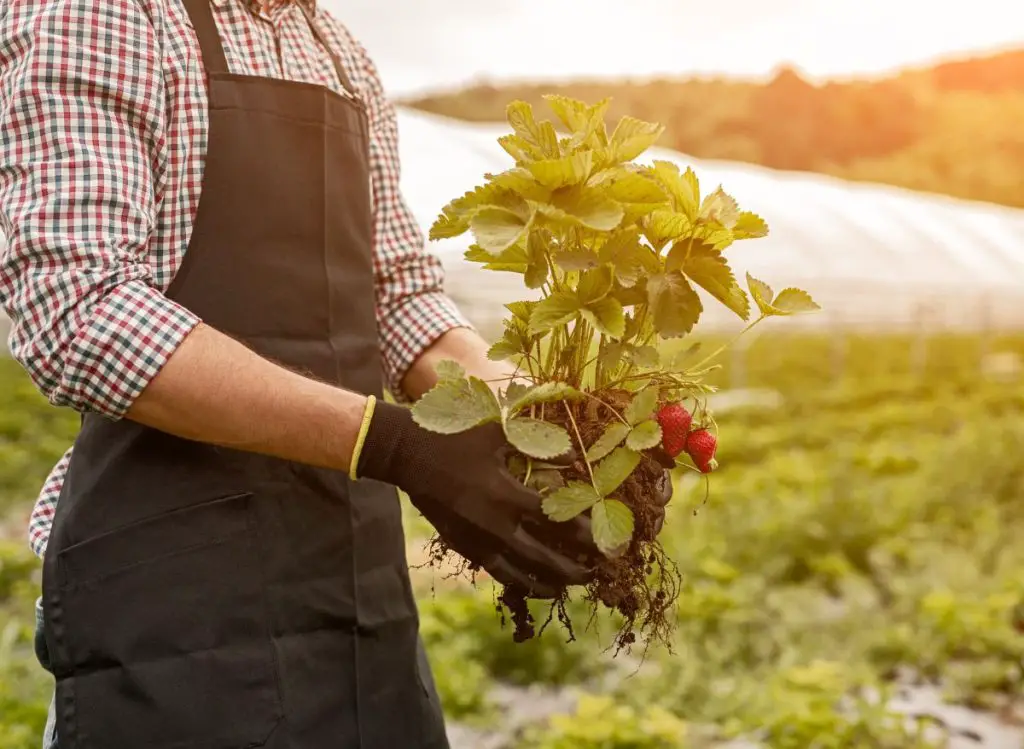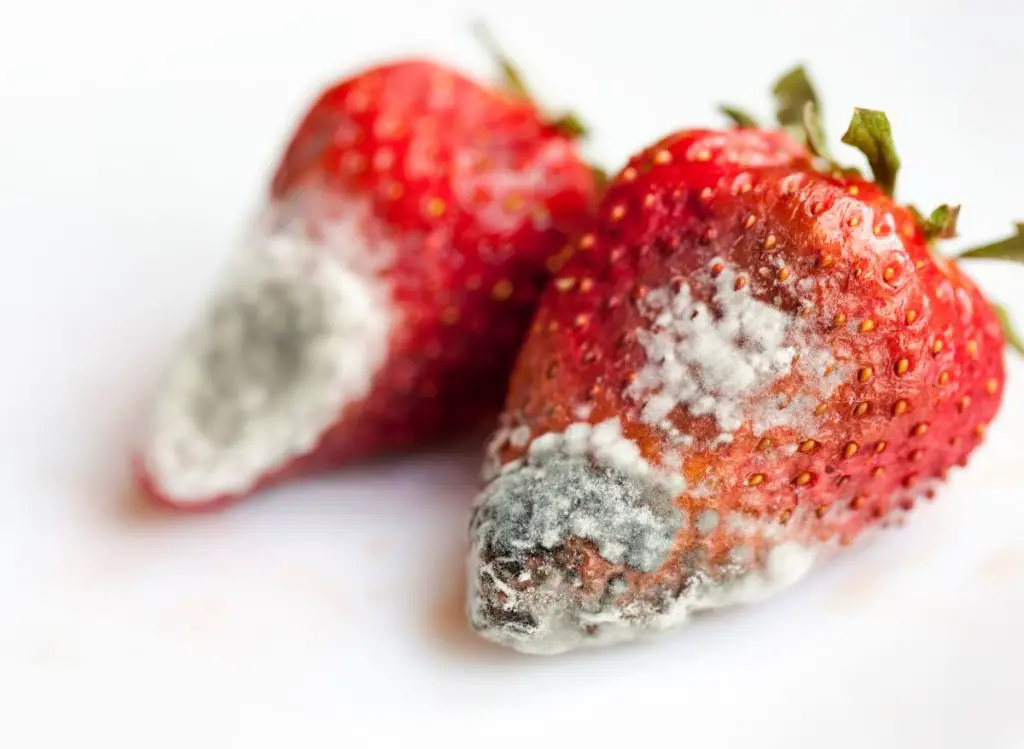
If you are a gardener, you know that growing strawberries can be a bit tricky due to their vulnerability to pests and diseases. From aphids to gray mold, there are several pests and diseases that can damage the health of your strawberry plants, ultimately affecting the quality and quantity of fruit produced.
Luckily, with a little bit of knowledge and preventative measures, you can protect your strawberry plants from these troublesome issues.
Read on to explore some of the most common pests and diseases for strawberry plants, how to identify them, and, most importantly, how to prevent and treat them. You might also enjoy reading: How to Get Rid of Worms on Strawberry Plants (7 Effective natural ways!)
Common Pests and Diseases for Strawberry Plants
We all love strawberries, but it can be disappointing to discover that pests and diseases for strawberry plants are invading your strawberry plants.
Here are the most common pests and diseases for strawberry plants:
1- Spider Mites
These tiny pests can quickly spread and cause damage to your strawberry plants by sucking on their leaves and draining their nutrients. You can easily identify spider mites by their webbing on leaves, discoloration, and wilting of the leaves.
According to Pennsylvania State University experts gardeners, one of the best ways to avoid spider mites is to spray your plants with water to reduce their populations. They recommended spraying strawberry plants with a strong jet of water to reduce the buildup of spider mite populations.
You can also use insecticidal soap to get rid of spider mites completely, particularly if they become a big issue.
2- Gray Mold
Gray Mold is a common fungal disease that can affect both the fruit and leaves of your strawberry plants. Gray mold is usually caused by high humidity and wet weather.
The symptoms of Gray Mold include a fuzzy gray coating on the strawberry fruit and leaves, which eventually leads to the rotting of your strawberry plant.
To prevent Gray Mold, make sure to keep your strawberry plants well-ventilated and remove any dead or diseased plant material. It is also important to keep the soil dry and water the plants from the base, and avoid watering from above.
In addition, allowing sufficient spacing between strawberry plants is essential to promote airflow in the canopy (Source: North Carolina State University)

3- Raspberry Crown Borer
Raspberry crown borer can be a big problem for strawberry plants in areas where raspberries are grown. The larvae of the Raspberry Crown Borer feed on the plants’ roots and stems, which leads to wilting and eventual death of the plant.
The symptoms of this pest include a wilted plant with discolored patches on the stem and some parts of the leaves.
To avoid raspberry crown borer invasion, it is recommended to remove any nearby raspberry plants from your strawberry beds. It is also good to clean and sterilize your tools to avoid any cross-contamination (Source: Utah State University)
4- Verticillium Wilt
Verticillium wilt is a widespread fungal disease that affects many types of plants, including strawberries. The symptoms of Verticillium Wilt disease on strawberry plants include yellowing of the plant leaves, dying back starting from the tips of the leaves, and dying of certain branches.
To control Verticillium Wilt, avoid planting strawberries in areas where other plants have had this disease. Also, make sure that the soil is moist but not saturated, and improve soil drainage as part of your preventive methods. Plant rotation and strawberry plant companions are other excellent ways to prevent Verticillium Wilt (Source: Province of Manitoba)
5- Slugs and Snails
Slugs and snails are common pests that affect a variety of plants, and strawberries are no exception. These creatures can leave behind slimy trails on the leaves and fruits of your strawberry plants, which can lead to a decrease in their harvest.
There are a few things you can do to prevent and treat slugs and snails, including placing slug and snail traps around your plants, hand-picking them off your plants, or using a copper metal barrier around your plants.
You can also use baits and clean up debris in your garden to make it less hospitable to slugs and snails (Source: University of California)

Protecting Your Strawberry Plants from Pests and Diseases
Strawberries are among the most favored fruits that are enjoyed by many, and with proper care, you can ensure that your strawberry plants are healthy and free of pests and diseases.
Here are some of the most effective tips for protecting your strawberry plants from pests and diseases:
1- Identify the Pests and Diseases
Effectively identifying pests and diseases is one of the most important aspects of protecting your strawberry plants. Common pests that attack strawberry plants include:
- Aphids
- Slugs
- Strawberry bud weevils
- Spittlebugs
- Spider mites
- Tarnished plant bugs
- Strawberry sap bugs
- And strawberry leafrollers.
To prevent these pests from invading your strawberry patch, I encourage you to inspect your plants regularly, looking out for any sign of damage, such as holes in leaves or chewed-up fruit.
Diseases that commonly affect strawberry plants include:
- Powdery mildew
- Verticillium wilt
- Botrytis Rot (Gray Mold)
- Leaf Spot
- Charcoal Rot
- Leaf Blotch
- Alternaria Fruit Spot
- Red Stele/Red Core
- Anthracnose
- Leaf Scorch
- Phomopsis Leaf Blight
Look out for signs of these diseases, such as a white powdery substance on leaves or fruit, wilted leaves, and gray mold on the fruit.
2- Practice Good Sanitation Habits
Practicing good sanitation habits is essential for preventing the spread of pests and diseases in your strawberry patch. I recommend you keep your strawberry plants clean and free of debris, remove any rotten fruit from the ground, and dispose of it properly.
Also, make sure to avoid cross-contamination by disinfecting your tools between uses and avoiding moving from an infected plant to a healthy one without washing your hands or changing gloves.
3- Apply Organic Pesticides
There are several organic pesticides available that can help you control pests on your strawberry plants, including neem oil which can be sprayed on the leaves and fruit of the strawberry plant to repel pests.
You can also mix garlic, onion, and pepper with water and spray it on your plants; this mixture can help prevent pests from attacking your plants.
If you need to use a chemical pesticide, I recommend you choose a product labeled safe for use on strawberries and make sure to follow the instructions carefully.
4- Water Carefully
Strawberries are susceptible to fungal diseases when they are kept too wet, so avoid watering them from above since this can promote fungal growth. Instead, water your plants at the base using a drip irrigation system or a soaker hose.

5- Mulching Your Plants
Mulching helps to keep the soil moist and to prevent diseases caused by contact with the soil; it also helps to suppress weeds.
It is recommended to apply a 2-3 inch layer of organic mulch around the base of each strawberry plant, but make sure to keep the mulch away from the base of the plant so that it does not rot.
What to read next:
- How to Get Spiders Out of Strawberry Plants: Here’s how to do it!
- An Expert Guide on How to Get Rid of Bugs on Strawberry Plants!
- How To Keep Ants Off Strawberry Plants: Here’s How To Do It.
Closing Thoughts
I believe that prevention is key when it comes to pests and diseases that affect your strawberry plants. By following some of the tips above, as well as staying vigilant and checking on your plants regularly, you can have a healthy and productive strawberry crop.
Remember always to stay mindful of what you’re spraying or using to care for your plants; I always recommend you use organic and non-toxic methods wherever possible.

